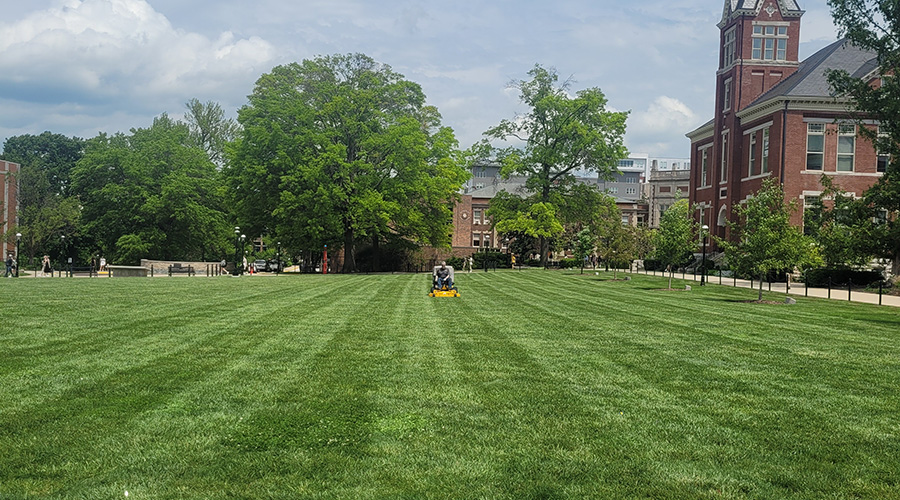Utility Vehicle Manufacturers Suggest Buyers Focus on Performance
Sustainability continues to exert its influence in all types of facilities. One result of its prominent place in many discussions is the growing link between grounds operations and environmental responsibility.
Utility vehicles are increasingly popular in institutional and commercial organizations because they are versatile, reliable, cost-effective equipment options. For these reasons, their use offers important insight into the way that grounds managers are balancing the growing demand for sustainability with the need for practicality and functionality.
Grounds managers "are primarily concerned with price and performance and the level of service and after-sale support offered by the vehicle manufacturer and dealer," says Cushman's Brandon Haddock. "Sustainability is certainly important, but with many facilities facing shrinking budgets due to continued economic woes, it may not be as central a focus as it would be in better economic conditions."
Focus on Performance
Manufacturers urge managers in the market for utility vehicles to take a broader view of the features and functions new-generation vehicles offer. One major challenge for specifiers, then, is sorting through product options offered by these manufacturers seeking to tap into the growing popularity of utility vehicles.
"Performance is always improving, and feature lists are constantly growing, but one of the largest changes in the industry is the sheer number of manufacturers in the space," Haddock says.
To find the most appropriate vehicle for the application, manufacturers urge managers to focus first on the benefits and features that have made utility vehicles so popular over the last decade.
"I would point to three things," says Jon Gilbeck with John Deere. [Number one is] "more power, more capability to do work, more efficiently and faster. Number two is really looking at the cargo box sizes, and the ability to do additional tasks — versatility. You're looking at larger payloads and larger cargo boxes.
"And third is more options in terms of passenger capabilities. Being able to take two and even four people along tends to be more efficient in terms of doing different tasks, whether it's grounds keeping or working on a football field."
Managers are likely to find utility vehicles that are a far cry from the stiff, uncomfortable offerings of a decade ago.
"These vehicles are becoming a lot more comfortable," says Gilbeck, adding new vehicles have been designed around operators' needs. "They have ergonomics very much like an automobile. When you get in them — whether it's a bench seat or a bucket seat — you're going to feel very comfortable, with lots of legroom. The instrumentation also is very automobile-like."
Manufacturers say managers have come to understand the link between operator comfort and productivity.
"Customers have started paying a lot more attention to ergonomics," says Brad Claus with Bobcat. "If an operator is going to be on this vehicle for five, six, seven hours, they want the operator to be as comfortable as possible."
Related Topics:














